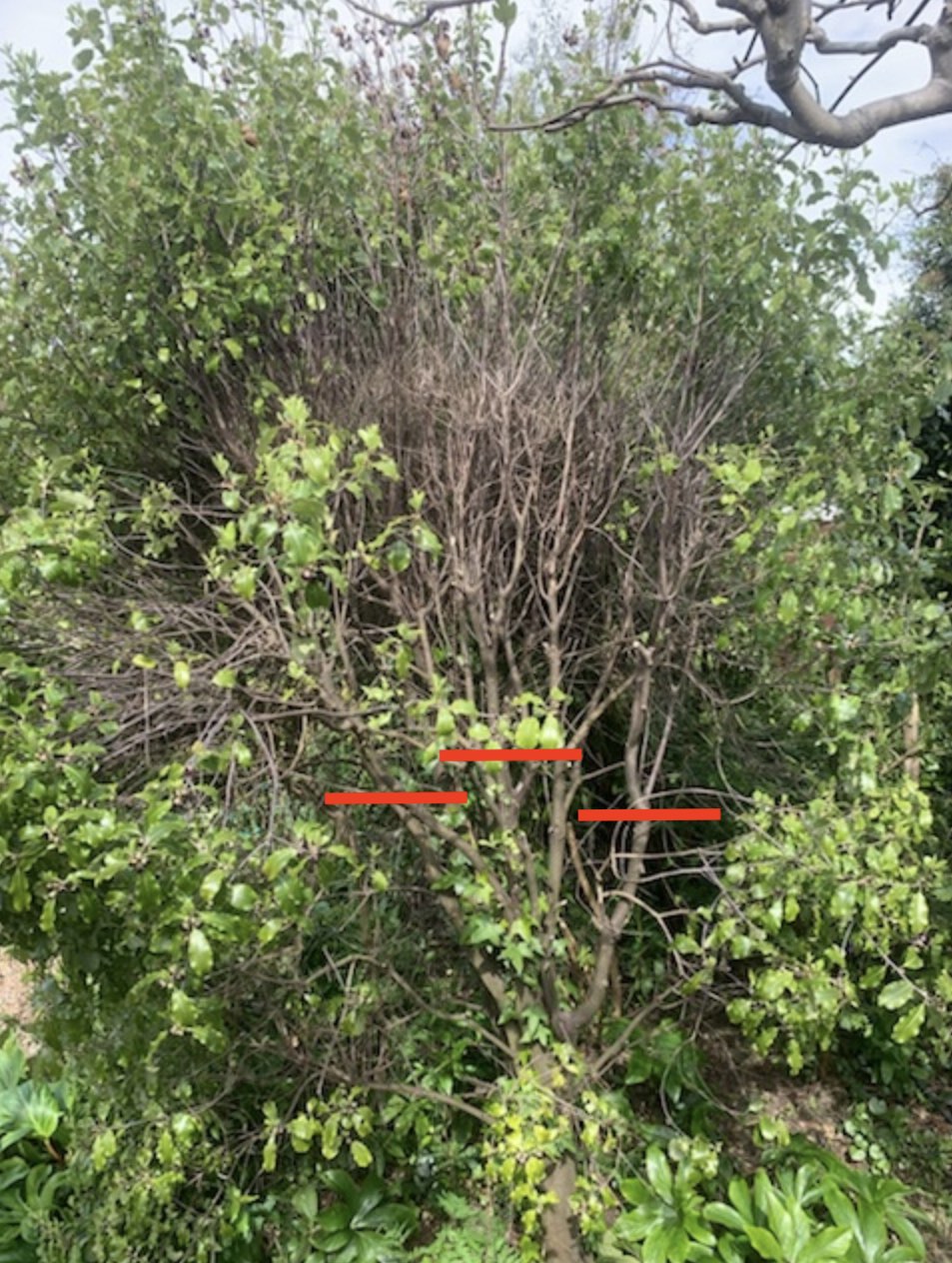Hi @wendywoo
Great question on Pittosporum pruning!
The Australian Cheesewood (common name) is part of the Pittosporaceae family. More commonly known in Latin as Pittosporum undulatum.
It has ovate undulating leaves - hence the Latin species title. You can check if it's a Pittosporum undulatum as the leaves smell sweet when crushed. It has a yellow flower and is sometimes known as Mock orange.
It's an incredibly fast growing shrub/tree which originates from South West Australia. It's a wetland tree so likes humidity and moist soil to really thrive. It will grow up to 15 meters in the right conditions.
It will survive pretty much anywhere even without its native conditions which is why it's been used as a bulletproof shrub for so long. It is considered an invasive species in Portugal where it was introduced and in other parts of the world, in particular where there's a warm humid climate.
How to prune Pittosporum undulata
You can easily hard prune Pittosporum / Australian Cheesewood and it will return in vigour! If I were looking at that photo I'd take it back to 12 inches above where the main stem splits into the multistem part.

Cut it in staggered cuts like the above to help create a balanced framework. If you cut them all at the same level horizontally you'll end up with an unnatural-looking shrub! Ie those car park council shrubs you see cut into blobs or boxes!
Then it will regrow with a bang bringing more foliage lower down the shrub. If your soil is poor, give it a good peat-free compost mulch but other than that, you'll be grand!
A pruning saw like this is your best bet to get through those thicker branches.
(This is an affiliate link so if you do choose to buy receive a small commission that helps keep this blog free to use!)
Hi @wendywoo
Great question on Pittosporum pruning!
The Australian Cheesewood (common name) is part of the Pittosporaceae family. More commonly known in Latin as Pittosporum undulatum.
It has ovate undulating leaves - hence the Latin species title. You can check if it's a Pittosporum undulatum as the leaves smell sweet when crushed. It has a yellow flower and is sometimes known as Mock orange.
It's an incredibly fast growing shrub/tree which originates from South West Australia. It's a wetland tree so likes humidity and moist soil to really thrive. It will grow up to 15 meters in the right conditions.
It will survive pretty much anywhere even without its native conditions which is why it's been used as a bulletproof shrub for so long. It is considered an invasive species in Portugal where it was introduced and in other parts of the world, in particular where there's a warm humid climate.
How to prune Pittosporum undulata
You can easily hard prune Pittosporum / Australian Cheesewood and it will return in vigour! If I were looking at that photo I'd take it back to 12 inches above where the main stem splits into the multistem part.

Cut it in staggered cuts like the above to help create a balanced framework. If you cut them all at the same level horizontally you'll end up with an unnatural-looking shrub! Ie those car park council shrubs you see cut into blobs or boxes!
Then it will regrow with a bang bringing more foliage lower down the shrub. If your soil is poor, give it a good peat-free compost mulch but other than that, you'll be grand!
A pruning saw like this is your best bet to get through those thicker branches.
(This is an affiliate link so if you do choose to buy receive a small commission that helps keep this blog free to use!)
 Lee Burkhill: Award Winning Designer & BBC 1's Garden Rescue Presenters Official Blog
Lee Burkhill: Award Winning Designer & BBC 1's Garden Rescue Presenters Official Blog



